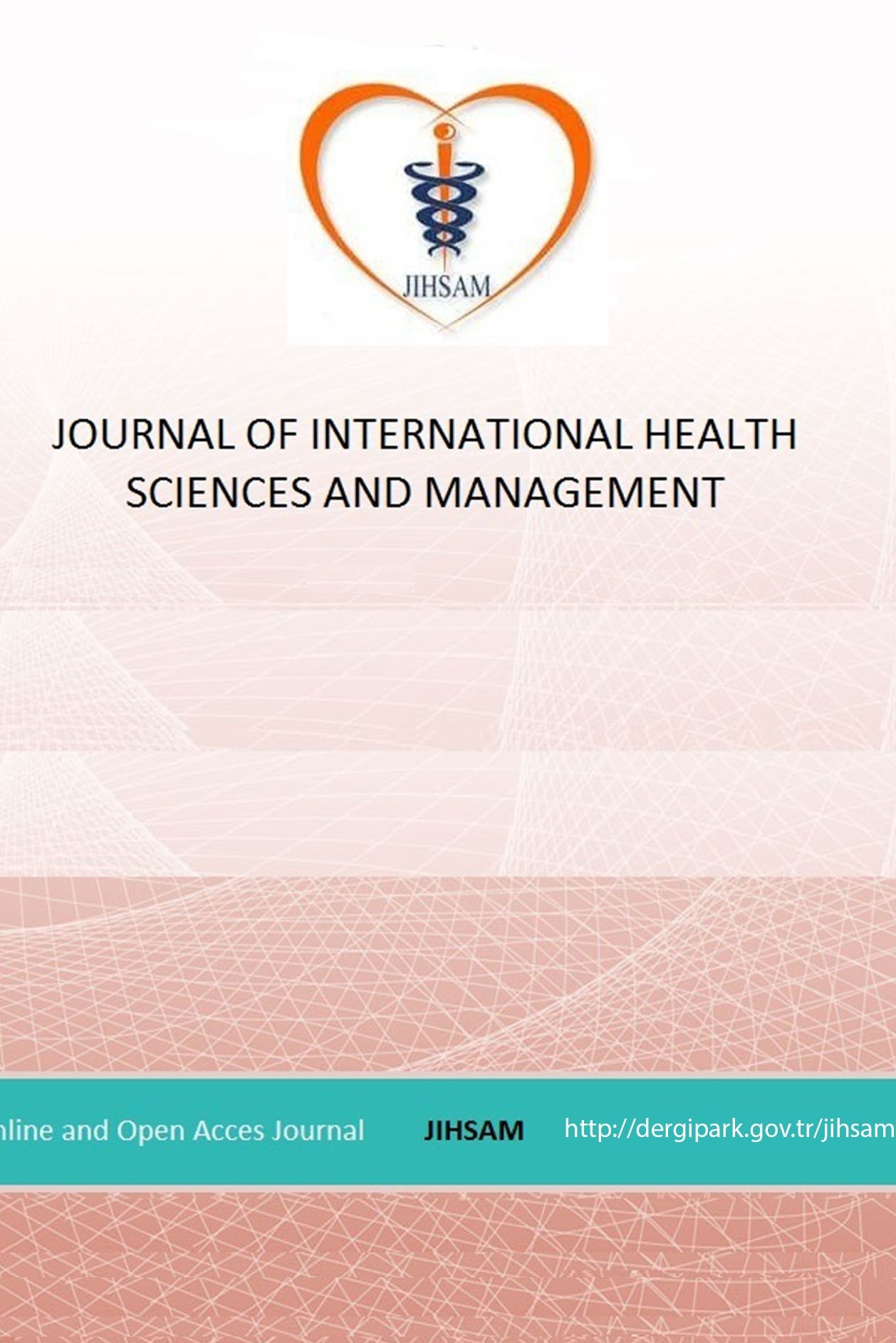THE RELATIONSHIP BETWEEN CYBER LOAFİNG AND JOB SATISFACTION IN HEALTHCARE EMPLOYEE
THE RELATIONSHIP BETWEEN CYBER LOAFİNG AND JOB SATISFACTION IN HEALTHCARE EMPLOYEE
Cyber-loafing, Job satisfaction, Healthcare employee,
___
- Afacan Fındıklı M. (2016). Sanal Kaytarma ve İş Performansı İlişkisi: Sağlık ve Tekstil Sektörü Çalışanlarının Karşılaştırılması, Sosyal Bilimler Enstitüsü Dergisi, 9(1), 33-62.
- Candan H. ve İnce M. (2016). Siber Kaytarma ve Örgütsel Bağlılık Arasındaki İlişkinin İncelenmesine Yönelik Emniyet Çalışanları Üzerine Bir Araştırma, Niğde Üniversitesi iktisadi ve idari Bilimler Fakültesi Dergisi, 9(1), 229-235.
- Çavuşoğlu S. ve Palamutçuoğlu B.T. (2017). İş Tatmininin Sanal Kaytarma Üzerindeki Etkisi, Mehmet Akif Ersoy Üniversitesi Sosyal Bilimler Enstitüsü Dergisi, 9(19), 430-444.
- Çelik N. (2014). Job Satısfactıon’s Impact on Cyberloafıng: an Unıversıty Example, 10th International Academic Conference, Vienna, 171-181.
- Çivilidağ A. (2017). İş Yaşamında Sanal Kaytarmanın İş Stresi ve İş Doyumu İle İlişkisi Üzerine Bir Araştırma, Akademik Bakış Dergisi, (59), 355-373.
- Garrett R.K. ve Danziger J.N. (2008). Disaffection or Expected Outcomes: Understanding Personal Internet Use During Work, Journal of Computer-Mediated Communication (13), 937–958.
- Güngör M (2016). Sanal Kaytarma ve Örgütsel Bağlılık İlişkisi: Kamu ve Özel Sektör Üzerine Bir Araştırma, Atatürk Üniversitesi Sosyal Bilimler Enstitüsü, Yayınlanmamış Yüksek Lisans Tezi.
- Hoş C. ve Oksay A. (2015). Hemşirelerde Örgütsel Bağlılık İle İş Tatmini İlişkisi, Süleyman Demirel Üniversitesi İktisadi ve İdari Bilimler Fakültesi Dergisi 20(4), 1-24.
- Kanten P. (2014). İşyeri Nezaketsizliğinin Sosyal Kaytarma Davranışı ve İşten Ayrılma Niyeti Üzerindeki Etkisinde Duygusal Tükenmenin Aracılık Rolü, Aksaray Üniversitesi İktisadi ve İdari Bilimler Fakültesi Dergisi, 6(1), 11-26.
- Kaplan M. ve Çetinkaya A.Ş. (2014). Sanal Kaytarma ve Demografik Özellikler Açısından Farklılıklar: Otel İşletmelerinde Bir Araştırma, Anatolia: Turizm Araştırmaları Dergisi, 25 (1), 26-34.
- Lim V. K. and Teo T.S.H. (2005). Prevalence, Perceived Seriousness, Justification And Regulation of Cyberloafing In Singapore An Exploratory Study, Information & Management, (42), 1081–1093.
- Locke E. A. (1976). The Nature and Causes of Job Satisfaction, Ed. M. D. Dunnette, Handbook of Industrial and Organizational Psychology, Rand McNally College Publishing Coop, Chicago.
- Nal M. ve Nal B. (2018). Sağlık Çalışanlarının İş Doyumu Düzeylerinin İncelenmesi Bir Kamu Hastanesi Örneği, Ordu Üniversitesi Sosyal Bilimler Araştırmaları Dergisi, 8(1), 131-140.
- Örücü E.ve Yıldız H. (2014). İşyerinde Kişisel İnternet ve Teknoloji Kullanımı: Sanal Kaytarma, Ege Akademik Bakış Dergisi, 14(1), 99-114.
- Ünal Ö.F. ve Tekdemir S. (2015). Sanal Kaytarma: Bir Kamu Kurumunda Ampirik Bir Araştırma, Süleyman Demirel Üniversitesi İktisadi ve İdari Bilimler Fakültesi Dergisi 20(2), 95-118.
- Weiss D. J., Davis R. V., England G. W. and Lofguist L. H. (1967). Manual for the Minnesota Satisfaction Questionnarie. Industrial Relation Center, University of Minnesota, Minneapolis.
- Yazıcıoğlu, Y. ve Erdoğan, S. (2004). Spss Uygulamalı Bilimsel Araştırma Yöntemleri, Detay Yayıncılık, Ankara.
- Yayın Aralığı: Yılda 2 Sayı
- Başlangıç: 2015
- Yayıncı: Sedat BOSTAN
Nilüfer KORKMAZ YAYLAGÜL, Suzan YAZICI, Ahmet Melik BAŞ, Yusuf Cem YERLİ
THE RELATIONSHIP BETWEEN CYBER LOAFİNG AND JOB SATISFACTION IN HEALTHCARE EMPLOYEE
Yunus Emre ÖZTÜRK, Hilal AKMAN DÖMBEKCİ, Müjdat YEŞİLDAL
THE EFFECTS OF INTERNAL MARKETING ACTIVITIES ON ORGANIZATIONAL CITIZENSHIP BEHAVIOR
PROGRESS OF MOBILE HEALTH: USES AND BENEFITS
